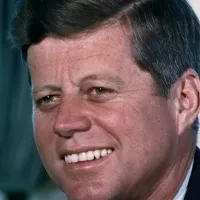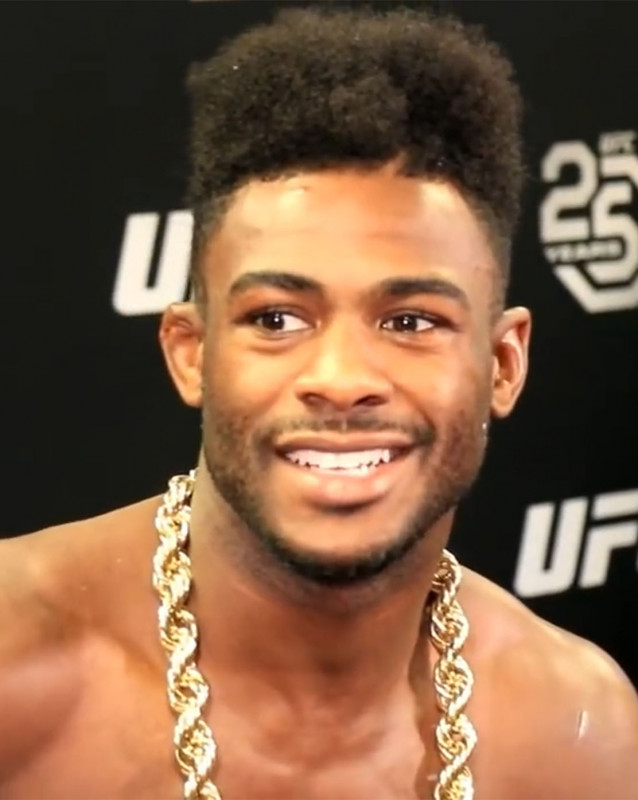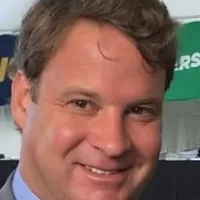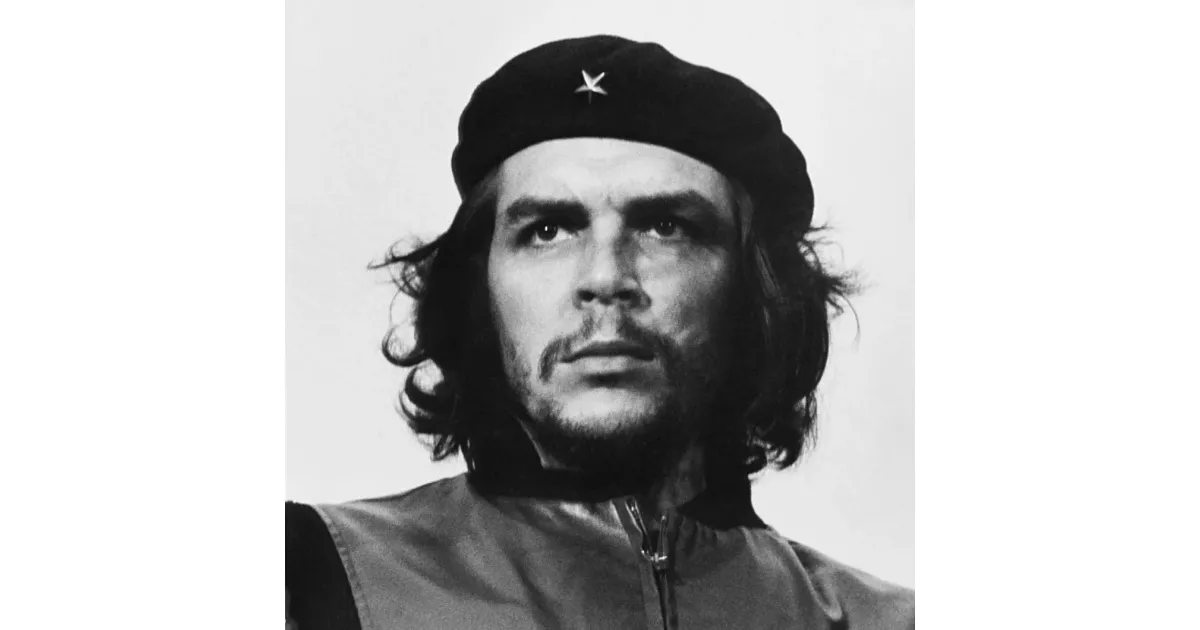Ernesto "Che" Guevara was a prominent Argentine Marxist revolutionary, physician, and guerrilla leader. He played a key role in the Cuban Revolution and became a significant figure in the Cuban government. Beyond his involvement in Cuba, Guevara sought to spread revolution to other countries, particularly in Africa and South America. His efforts often involved guerrilla warfare and promoting socialist ideologies. Despite his controversial legacy, Guevara remains a globally recognized symbol of rebellion and revolutionary ideals, often seen as a countercultural icon.
June 1928: Birth of Ernesto "Che" Guevara
In June 1928, Ernesto "Che" Guevara was born, marking the beginning of the life of a figure who would become a major icon of the Cuban Revolution and a global symbol of rebellion.
June 1928: Ernesto Guevara's Birth
On 14 June 1928, Ernesto Guevara was born in Rosario, Argentina, to Ernesto Guevara Lynch and Celia de la Serna y Llosa. He was the eldest of five children in an upper-class Argentine family with Spanish, Basque, and Irish ancestry.
1947: Plays for Estudiantes of Córdoba
In 1947, Che Guevara played rugby for Estudiantes of Córdoba.
1948: Plays for Yporá Rugby Club
In 1948, Che Guevara played rugby for Yporá Rugby Club.
1948: Enters University of Buenos Aires
In 1948, Guevara entered the University of Buenos Aires to study medicine.
1949: Plays for Atalaya Polo Club
In 1949, Che Guevara played rugby for Atalaya Polo Club.
1950: Solo Bicycle Trip
In 1950, Guevara embarked on a 4,500-kilometer solo trip through the rural provinces of northern Argentina on a bicycle.
1951: Continental Motorcycle Trek
In 1951, Guevara began a nine-month, 8,000-kilometer continental motorcycle trek through South America with Alberto Granado.
June 1953: Medical Degree
In June 1953, Ernesto Guevara completed his studies and received his medical degree.
July 1953: Arrival in Guatemala and Meeting Hilda Gadea Acosta
In July 1953, Guevara sought out Hilda Gadea Acosta in Guatemala City, who introduced him to high-level officials in the Árbenz government, and he also contacted Cuban exiles linked to Fidel Castro. It was during this period he acquired his nickname, Che.
July 1953: Travels Through Latin America
On 7 July 1953, Guevara set out to Bolivia, Peru, Ecuador, Panama, Costa Rica, Nicaragua, Honduras, and El Salvador.
December 1953: Letter to Aunt Beatriz
On 10 December 1953, Guevara sent a letter from San José, Costa Rica, to his aunt Beatriz, expressing his conviction that the United Fruit Company's capitalist system was harmful to average citizens and swearing to vanquish these "octopuses" on an image of Joseph Stalin.
May 1954: Arrival of Weapons from Czechoslovakia
In May 1954, a ship carrying infantry and light artillery weapons from communist Czechoslovakia arrived for the Árbenz government, prompting a response from the United States government to destabilize Guatemala.
September 1954: Arrival in Mexico City
In September 1954, Guevara arrived in Mexico City, where he worked in the allergy section of the General Hospital and at the Hospital Infantil de Mexico, lectured on medicine at the National Autonomous University of Mexico, and worked as a news photographer for Latina News Agency.
June 1955: Meeting Fidel Castro
In June 1955, Ñico López introduced Guevara to Raúl Castro, who then introduced him to Fidel Castro. Guevara joined the 26th of July Movement.
November 1956: Granma sets out for Cuba
In November 1956, Castro's revolutionary plan commenced with an assault on Cuba from Mexico via the Granma. Upon landing, Batista's military attacked, resulting in many deaths. During this confrontation, Che Guevara swapped his medical supplies for ammunition, marking a symbolic moment.
1957: Revolutionaries regroup in Sierra Maestra
In 1957, a small group of revolutionaries regrouped in the Sierra Maestra mountains, receiving support from Frank País's urban guerrilla network, the 26 July Movement, and local campesinos. An interview with Castro by Herbert Matthews in The New York Times presented a mythical image for Castro and the guerrillas. Guevara realized the importance of the media in their struggle. He also suffered from painful mosquito bites.
February 1958: Creation of Radio Rebelde
In February 1958, Guevara was instrumental in creating the clandestine radio station Radio Rebelde, which broadcast news to the Cuban people and provided radiotelephone communication between rebel columns. Guevara was inspired by the effectiveness of CIA-supplied radio in Guatemala.
February 1958: CIA Report on Guevara
In February 1958, a CIA "biographical and personality report" noted Guevara's wide range of academic interests and intellect, describing him as "quite well read" and "fairly intellectual for a Latino".
March 1958: US stops selling arms to Cuba
In March 1958, atrocities by Batista's forces led the United States to stop selling arms to the Cuban government.
July 1958: Critical role in the Battle of Las Mercedes
In July 1958, Guevara played a critical role in the Battle of Las Mercedes by halting a force of 1,500 men. He became an expert at hit-and-run tactics against Batista's army.
December 1958: Taking Las Villas province
In December 1958, Guevara led a new column westward, cutting the island in half by taking Las Villas province. He executed a series of tactical victories, gaining control of the province except for Santa Clara. He then directed his suicide squad in the attack on Santa Clara, leading to the final military victory of the revolution.
1958: Radio Rebelde reports capture of Santa Clara
On New Year's Eve of 1958, Radio Rebelde broadcasted the capture of Santa Clara by Guevara's column. This report contradicted the controlled national media's claims, which had earlier announced Guevara's supposed death.
January 1959: Guevara becomes commander of La Cabaña Fortress prison
In January 1959, Castro appointed Guevara commander of La Cabaña Fortress prison. He was tasked with purging the Batista army and exacting "revolutionary justice".
January 1959: Start of the Tarará Group
In mid-January 1959, Guevara started the Tarará Group, which debated and formed new plans for Cuba's social, political, and economic development. He also began writing his book Guerrilla Warfare. In late January, he told Hilda Gadea he was involved with another woman.
January 1959: Batista flees Cuba, Guevara enters Havana
On January 1, 1959, Batista fled Cuba. On January 2, Guevara entered Havana to take control of the capital. Fidel Castro arrived six days later, on January 8, 1959.
January 1959: Public approval of executions
On January 22, 1959, a Universal Newsreel broadcast featured Fidel Castro asking Cubans if they approved of the executions, which they supported with a roaring "¡Sí!" (yes).
January 1959: Speech on social ideas of the rebel army
On January 27, 1959, Guevara delivered a speech emphasizing that the new Cuban government's main concern was "the social justice that land redistribution brings about."
January 1959: Execution of Colonel Rojas
On January 7, 1959, Guevara ordered the execution of Colonel Rojas, the chief of police in Santa Clara. The execution was broadcast on Cuban television, becoming one of the first killings ever aired on television.
February 1959: Guevara defends executions
In February 1959, Guevara stated in a letter that the executions by firing squads were a necessity and an imposition of the people of Cuba.
May 1959: Implementation of the agrarian reform law
On May 17, 1959, the agrarian reform law, crafted by Guevara, went into effect. It limited the size of all farms to 1,000 acres and expropriated holdings over that limit.
June 1959: Guevara's three-month tour of Bandung Pact countries
On June 12, 1959, Castro sent Guevara on a three-month tour of mostly Bandung Pact countries. In Jakarta, he met with Indonesian president Sukarno. Guevara spent 12 days in Japan negotiating trade relations.
June 1959: End of Guevara's Tenure at La Cabaña
On June 12, 1959, Guevara's five-month tenure as commander of the La Cabaña Fortress prison came to an end.
June 1959: Marriage to Aleida March
On June 2, 1959, Guevara married Aleida March, a Cuban-born member of the 26 July movement. The civil ceremony was held at La Cabaña military fortress.
September 1959: Guevara returns to Cuba, land seizures begin
In September 1959, upon Guevara's return to Cuba, it became clear that Fidel Castro's political influence had grown. The government initiated land seizures under the agrarian reform law, offering landowners low-interest "bonds" for compensation, which raised concerns in the United States. Wealthy cattlemen in Camagüey, along with disaffected rebel leader Huber Matos and the anti-communist wing of the 26 July Movement, opposed the land redistributions, denouncing "communist encroachment." Additionally, Dominican dictator Rafael Trujillo offered assistance to the "Anti-Communist Legion of the Caribbean," a multinational force plotting to overthrow Castro's regime during this time in September 1959.
1959: Che Guevara visits Egypt
In 1959, Che Guevara visited Egypt and established fraternal relations with Egyptian President Gamal Abdel Nasser.
1959: Application of Ley de la Sierra
In 1959, the revolutionary government extended the application of the Ley de la Sierra (Law of the Sierra) to the whole of the republic and to those it considered war criminals. This law included the death penalty for serious crimes.
1959: Critique of agrarian reform law
In a meeting with French economist René Dumont, Guevara blamed the inadequacy of the agrarian reform law enacted by the Cuban government in 1959, which turned large plantations into farm cooperatives or split up land amongst peasants.
March 1960: Explosion of La Coubre and aftermath
On 4 March 1960, two explosions destroyed the French freighter La Coubre in Havana Harbor, killing at least 76 people. Guevara personally assisted victims. Fidel Castro blamed the CIA for this "act of terrorism". A state funeral was held for the victims. At the memorial service, Alberto Korda took the famous photograph of Guevara, now known as Guerrillero Heroico.
July 1960: Guevara denounces U.S. economic aggression
In July 1960, after the United States reduced imports of Cuban sugar, Guevara addressed over 100,000 workers at a rally in front of the Presidential Palace, denouncing the "economic aggression" of the United States. Time Magazine reporters described Guevara as guiding Cuba with "icy calculation, vast competence, high intelligence, and a perceptive sense of humor" around this time.
September 1960: Guevara defines Cuban revolution as Marxist
In September 1960, at the First Latin American Congress, when asked about Cuba's ideology, Guevara defined it as Marxist, stating that the revolution discovered the paths that Marx pointed out. He cited Karl Marx as his ideological inspiration and defended his political stance.
December 1960: Guevara signs trade agreement in East Berlin
At the end of 1960, as part of establishing closer commercial relationships with Eastern Bloc states, Guevara visited East Berlin and signed a trade agreement there on 17 December 1960. While in East Germany, he met Tamara Bunke (later known as "Tania"), who was assigned as his interpreter.
1960: Construction of Guanahacabibes labor camp
At some point in 1960, Guevara ordered the construction of the Guanahacabibes camp: a labor camp to "rehabilitate" his employees who had committed infractions at work. Historians have had difficulty characterizing the camp, because it was extra-legal and thus poorly documented.
1960: Guevara promotes rapid industrialization
In 1960, Guevara began promoting an idea of rapidly industrializing Cuba, and diversifying Cuba's agriculture.
1960: Cooke Moves to Cuba and Associates Peronism with Fidelismo
In 1960, John William Cooke, a close associate of Perón, moved to Cuba and associated Peronism with Fidelismo, seeing the left-wing nationalism of Peronism and Marxism-Leninism of Fidelismo as complementary.
March 3, 1961: Announcement of accelerated industrialization
On March 3, 1961, as head of the Ministry of Industries, Guevara announced on the radio program People's University that "accelerated industrialization" would require the centralization of all economic decision making.
April 1961: Bay of Pigs Invasion
On 17 April 1961, 1,400 US-trained Cuban exiles invaded Cuba during the Bay of Pigs Invasion. Guevara did not play a key role in the fighting, as one day before the invasion a warship carrying Marines faked an invasion and drew forces commanded by Guevara to that region. It was also during this deployment that he suffered a bullet grazing to the cheek when his pistol fell out of its holster and accidentally discharged.
August 1961: JUCEPLAN announces economic growth target
In August 1961, Regino Boti, the head JUCEPLAN, the central planning board of Cuba, announced that the country would soon have a 10% rate of economic growth.
August 1961: Guevara at economic conference in Uruguay
In August 1961, during an economic conference of the Organization of American States in Punta del Este, Uruguay, Che Guevara sent a note of "gratitude" to United States President John F. Kennedy through Richard N. Goodwin, Deputy Assistant Secretary of State for Inter-American Affairs. Guevara antagonistically attacked the United States' claim of being a "democracy", speaking out against the "persecution" that in his view "drove scientists like Oppenheimer from their posts, deprived the world for years of the marvelous voice of Paul Robeson, and sent the Rosenbergs to their deaths against the protests of a shocked world."
1961: Cuban Literacy Campaign
In 1961, the Cuban government, at Guevara's behest, dubbed 1961 the "year of education" and mobilized over 100,000 volunteers into "literacy brigades" to construct schools, train new educators, and teach the guajiros (peasants) to read and write. By the completion of the Cuban literacy campaign in 1961, 707,212 adults had been taught to read and write, raising the national literacy rate to 96%.
March 1962: Guevara admits failure of economic plan
In March 1962, Guevara admitted in a speech that the economic plan was a failure, specifically stating it was "an absurd plan, disconnected from reality, with absurd goals and imaginary resources."
August 1962: Guevara signs missile agreement with Soviets
On 30 August 1962, Che Guevara traveled to the Soviet Union to sign off on the final agreement regarding the Soviet Union planting nuclear missiles in Cuba. Guevara argued with Khruschev that the missile deal should be made public but Khruschev insisted on secrecy.
October 1962: Cuban Missile Crisis
In October 1962, the Cuban Missile Crisis occurred. Guevara played a key role in bringing Soviet nuclear missiles to Cuba, bringing the world to the brink of nuclear war.
1962: Cuban Missile Crisis
In 1962, Che Guevara played a central role in bringing Soviet nuclear-armed ballistic missiles to Cuba, which preceded the Cuban Missile Crisis.
1963: Sugar production decline and Guevara's resignation
In 1963, Cuba's sugar harvest brought in 3.8 million tons, the lowest in over twenty years. General food production was also down per capita by 40% for the next three years. Castro began to emphasize sugar production in economic planning, and Guevara resigned from his position as head of the Ministry of Industries.
1963: Guevara publishes Against bureaucratism
In February 1963, Guevara published the essay Against bureaucratism, which discussed the "guerrillaism" of the Cuban leadership, the need for bureaucratization, and the new need to de-bureaucratize to end idleness in production.
December 1964: Che Guevara addresses the United Nations
In December 1964, Che Guevara, as head of the Cuban delegation, traveled to New York City and addressed the United Nations. On December 11, 1964, he criticized the UN's inaction against apartheid in South Africa and denounced the United States' policy towards their black population.
1964: Guevara publishes The Cuban Economy: Its Past, and Its Present Importance
In 1964, Guevara published an article, titled The Cuban Economy: Its Past, and Its Present Importance, which analyzed the recent failure of Guevara's economic plans where he states that he committed "two principle errors": the diversification of agriculture, and dispersing resources evenly for various agricultural sectors.
February 1965: Last Public Appearance on the International Stage
On February 24, 1965, in Algiers, Algeria, Guevara made his last public appearance on the international stage, delivering a speech at an economic seminar on Afro-Asian solidarity. He criticized socialist countries for complicity with Western exploiters and outlined measures for the communist bloc to defeat imperialism.
April 1965: Guevara arrives in Congo to support the Simba movement
On April 24, 1965, Guevara, under the alias Ramón Benítez, arrived in Congo with a Cuban expedition to support the leftist Simba movement. They collaborated with Laurent-Désiré Kabila. Guevara stated that Patrice Lumumba’s murder should be a lesson for all.
June 1965: Castro addresses speculation regarding Guevara's fate
On June 16, 1965, amidst international speculation about Guevara's disappearance, Castro stated that the people would be informed when Guevara himself wished to let them know.
September 1965: ANC launches Operation South
On 27 September 1965, the ANC and its allies launched Operation South to destroy Kabila's forces. With the support of Che and his Cubans, the Simbas put up substantial resistance.
October 1965: Castro reveals Guevara's farewell letter
On October 3, 1965, Castro publicly revealed Che Guevara's undated "farewell letter," in which Guevara reaffirmed his solidarity with the Cuban Revolution but declared his intention to leave Cuba to fight for the revolutionary cause abroad. He also resigned from his positions and renounced his Cuban citizenship.
November 1965: Guevara leaves Congo
On November 20, 1965, suffering from dysentery and acute asthma, and disheartened after seven months of defeats and inactivity, Guevara left Congo with the Cuban survivors. Guevara concluded that he left Congo because: "The human element failed. There is no will to fight. The [rebel] leaders are corrupt. In a word ... there was nothing to do."
1965: Yugoslav Journal Observes Incomplete Cuban Factories
As early as 1965, the Yugoslav communist journal Borba observed the many half-completed or empty factories in Cuba, a legacy of Che Guevara's short tenure as Minister of Industries.
October 1966: First incursion of Che Guevara in Bolivia
On 3 October 1966, Che Guevara had the first incursion in Bolivia. This reconstitution is based on top-secret documents kept in the UNESCO protected Archives of Terror, in Paraguay.
November 1966: First Diary Entry Documenting Guerrilla Campaign
In November 1966, Che Guevara's 30,000-word, hand-written diary documented the events of the guerrilla campaign in Bolivia, with the first entry on November 7, 1966, shortly after his arrival at the farm in Ñancahuazú.
November 1966: Guevara Arrives in Bolivia
On November 3, 1966, Guevara secretly arrived in La Paz, Bolivia, on a flight from Montevideo. He used the false name Adolfo Mena González and posed as a middle-aged Uruguayan businessman working for the Organization of American States.
1966: Cuban Economy Reorganized on Guevarist Moral Lines
In 1966, the Cuban economy was reorganized on Guevarist moral lines, emphasizing voluntarism and ideological motivations to increase production, without material incentives.
April 1967: Régis Debray Captured with Guevara in Bolivia
In April 1967, French intellectual Régis Debray was captured while with Che Guevara in Bolivia. Debray described a destitute situation where Guevara's men suffered malnutrition, lack of water, absence of shoes, and only possessed six blankets for 22 men.
October 1967: Death of Che Guevara
In October 1967, Che Guevara died, marking the end of his life as an Argentine Marxist revolutionary, physician, author, guerrilla leader, diplomat, and military theorist.
October 1967: Last Diary Entry Documenting Guerrilla Campaign
In October 1967, Che Guevara's last diary entry was dated October 7, 1967, the day before his capture. The diary documented events of the guerrilla campaign in Bolivia, and it described Guevara's increasing illness and reliance on offensives to obtain medicine.
October 1967: Memorandum to President Johnson on Guevara's Death
In October 1967, a declassified memorandum to United States President Lyndon B. Johnson from his National Security Advisor Walt Rostow, characterized the decision to kill Che Guevara as "stupid" but "understandable from a Bolivian standpoint".
October 1967: Guevara is wounded and captured
On the morning of October 8, 1967, Bolivian Special Forces encircled Guevara's guerrilla encampment in the Yuro ravine after receiving information from an informant. A battle ensued, and Guevara was wounded and taken prisoner while leading a detachment. Upon capture, he reportedly shouted, "Do not shoot! I am Che Guevara and I am worth more to you alive than dead."
November 1967: Che Guevara's corpse on display in Vallegrande
After his execution, Guevara's body was flown to Vallegrande. On display, Guevara's corpse was considered by many to represent a "Christ-like" visage, with some even surreptitiously clipping locks of his hair as divine relics. Björn Kumm of the Swedish Aftonbladet described the scene in an 11 November 1967, exclusive for The New Republic.
1967: Announcement that Guevara was serving the revolution in Latin America
At the 1967 International Workers' Day rally in Havana, the acting minister of the armed forces announced that Guevara was "serving the revolution somewhere in Latin America".
1967: Abandonment of Guerrilla Warfare as Instrument of Cuban Foreign Policy
Che Guevara's death in 1967 led to the abandonment of guerrilla warfare as an instrument of Cuban foreign policy, ushering in a rapprochement with the Soviet Union and the reformation of the government along Soviet lines.
1967: Early Successes of the ELN
During the early months of 1967, Guevara's guerrilla force, operating as the ELN, achieved a number of successes against Bolivian army regulars in the mountainous Camiri region.
1967: Perón Homage to Guevara Upon Death
In 1967, Perón maintained a close relationship with Guevara and paid homage to him upon his death, calling him "one of ours, perhaps the best".
August 1968: Debray Interview on Guevara's Capture
In August 1968, Régis Debray, captured with Guevara in April 1967, gave an interview from prison. Debray spoke on the circumstances of Guevara's capture and recounted Guevara being "optimistic about the future of Latin America" despite the futile situation, and remarked that Guevara was "resigned to die in the knowledge that his death would be a sort of renaissance".
1968: Internment of "Anti-Socials" in UMAP Labor Camps
Between 1965 and 1968, Cubans labeled as "anti-socials" who had fallen outside the "new man" concept, were interned in UMAP labor camps.
1968: Creation of Graphic Image of Che's Face
In 1968, a high-contrast monochrome graphic of Che Guevara's face, created by Irish artist Jim Fitzpatrick, became a universally merchandized and objectified image.
1968: Che Guevara's Image During Riots and Protests
In 1968, during riots in Berlin, France, Chicago, and on American college campuses, young protestors wore Che Guevara T-shirts and carried his pictures during their marches, symbolizing his continued influence.
1968: Cuban Economy Remodeled Inspired by Guevara
In 1968, the Cuban economy was remodeled, inspired by Che Guevara's arguments in the Great Debate from years earlier, focusing on sugar production and leading to the nationalization of non-agricultural private businesses.
1969: Guevara's Irish lineage
In 1969, Guevara's father was quoted on his son's Irish lineage: "The first thing to note is that in my son's veins flowed the blood of the Irish rebels..." .
1986: Start of Economic Reforms Based on Guevarism
In 1986, Cuba began a series of economic reforms, officially titled the "Rectification of Errors and Negative Tendencies", which were based on the economic ethos of Guevarism, aimed at eliminating private businesses and trade markets.
1992: End of Economic Reforms Based on Guevarism
In 1992, Cuba ended the series of economic reforms, officially titled the "Rectification of Errors and Negative Tendencies", which were based on the economic ethos of Guevarism, aimed at eliminating private businesses and trade markets.
1995: Vargas Reveals Location of Guevara's Corpse
In late 1995, retired Bolivian General Mario Vargas revealed that Che Guevara's corpse lay near a Vallegrande airstrip, leading to a multi-national search for the remains.
July 1997: Discovery of Guevara's Remains
In July 1997, a team of Cuban geologists and Argentine forensic anthropologists discovered the remnants of seven bodies in two mass graves, including one man without hands (as Guevara would have been).
October 1997: Guevara's Remains Laid to Rest
On October 17, 1997, 30 years and 8 days after Guevara's death, Guevara's remains, with those of six of his fellow combatants, were laid to rest with military honors in a mausoleum in Santa Clara.
2000: Implementation of Reforms in Homage to Che Guevara
In 2000, the economic reforms and mass mobilizations implemented during the Battle of Ideas were often conducted in homage to the philosophy of Che Guevara, stressing economic voluntarism and central planning.
2004: Release of "The Motorcycle Diaries" Film
In 2004, "The Motorcycle Diaries" was adapted into a film of the same name.
2006: End of Battle of Ideas Reforms in Homage to Che Guevara
In 2006, the economic reforms and mass mobilizations implemented during the Battle of Ideas ended, having often been conducted in homage to the philosophy of Che Guevara, stressing economic voluntarism and central planning.
2007: Release of My Enemy's Enemy
In 2007, the documentary My Enemy's Enemy alleged that Nazi war criminal Klaus Barbie advised and possibly helped the CIA orchestrate Guevara's eventual capture.
July 2008: Unveiling of Guevara's Diaries
In July 2008, the Bolivian government of Evo Morales unveiled Che Guevara's formerly-sealed diaries composed in two frayed notebooks, along with a logbook and several black-and-white photographs.
2008: Unveiling of Bronze Statue of Che Guevara
In 2008 a 3.5-metre (12 ft) bronze statue of Che Guevara was unveiled in the city of his birth, Rosario.
2008: Chevolution Documentary Director on Guevara's Significance
In 2008, Trisha Ziff, director of the documentary Chevolution, remarked that Che Guevara's significance is more about ideals of creating a better society than the man and his specific history.
August 2009: Discovery of Guerrillas' Bodies Near Teoponte
In August 2009, anthropologists discovered and unearthed the bodies of five of Che Guevara's fellow guerrillas near the Bolivian town of Teoponte.
2020: Publication of Opération Condor
In 2020, French journalist Pablo Daniel Magee published his book Opération Condor.
Mentioned in this timeline

John F Kennedy JFK was the th U S President...
Sudan officially the Republic of the Sudan is a country...
The Union of Soviet Socialist Republics USSR existed from to...
India officially the Republic of India is a South Asian...
Morocco officially the Kingdom of Morocco is a North African...
Germany officially the Federal Republic of Germany is a Western...
Trending
Benin officially the Republic of Benin is a West African country bordered by Togo Nigeria Burkina Faso and Niger Its...
The foot is a crucial anatomical structure present in numerous vertebrate species Serving as the terminal part of a limb...
17 days ago Polls Indicate Negative Voter Sentiment Towards White House Handling of the Economy.

26 days ago Florence Pugh Addresses Online Abuse Regarding Zach Braff Relationship and its Impact.

6 months ago Aljamain Sterling questions Sean O'Malley's stardom, personality deemed 'a little dry'.
Brent Pry is an American football coach who recently served as the head coach at Virginia Tech from until his...
Popular
Matt and Ross Duffer known as the Duffer Brothers are...
Aftyn Alyssa Behn is an American politician currently serving as...

Candace Owens is an American conservative political commentator and author...

XXXTentacion born Jahseh Dwayne Ricardo Onfroy was a controversial yet...

Ilhan Omar is an American politician currently serving as the...

Lane Kiffin is an American football coach currently serving as...


